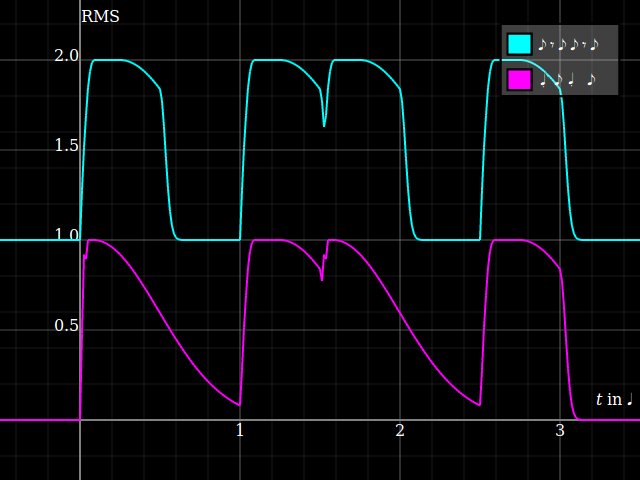I endorse Aaron's and Richard's answers, regarding what staccato means conceptually.
This answer is mostly to provide some examples and details as to how staccato will typically come out in the case of a string quartet (or, strings in general).
As I already commented, I strongly disagree with the people saying a staccato note should “in theory” be the same as a normal note of half the length.
“A normal note of half the length” is a model for staccato, but especially in bowed strings it's actually quite far from the reality of how players will render it.
Only on some instruments (notably piano, which unfortunately dominates many a music teacher's mindset although it is in these regards completely different from most other instruments) is each note characterised almost exclusively by pitch, dynamic level and length. In general however, and very much practically relevant in string instruments, the note may be shaped in multiple parameters over its entire length. A first approximation is to look at only the time-varying intensity.
Piano is limited to a constant (roughly exponential) decay, and playing a note half as long means simply you stop it† earlier:

It may then well be that a staccato crotchet 𝅘𝅥 𝅼 has exactly the same envelope as such a quaver 𝅘𝅥𝅮 on piano.
But even for such normal notes without any particular articulation, it's more complicated on string instruments! The bow doesn't bring the string (near-) immediately to full swing as a piano hammer does, but rather makes it “fade in” somewhat, depending on bow pressure and -speed. For long notes a slow attack is perfectly fine or even desired to get a smooth stringly sound, but in faster notes a player will adjust the pressure so the note is clear enough even in the short duration. Also, unlike piano the note doesn't decay by itself – but unless the passage is explicitly in legato, the player will fade it out some time before the actual end. Like,

The exact shape will of course vary between players and depending on the genre, but at any rate it should still be pretty clear when the note is really supposed to be finished.
Conversely, a staccato note will actually begin decaying almost immediately. It will typically also have a much quicker attack (achieved by “locking” and or “throwing” the bow hair into the string right before the note, so it's almost like a plucked or hammered tone), which alone will make it seem more detached from what happened before. This is actually not so much about loudness-curve, but tone character: any staccato note on strings will have more of a scratchy / clicky sound at the start, which string players would otherwise seek to avoid. Similar things can be said for wind instruments, where the start of the note will be articulated to different degrees with the tongue.
But what a staccato note won't have is a dedicated cutoff right in the middle of the note length.

Applied to your example, it would mean you should expect each version to come out roughly like this:

In fact, players might even end up playing the off-beat quavers slightly different when they're contrasted with staccato crotchets, than when all notes are quavers. But this really is hard to predict, how exactly it would come out.
†It's worth mentioning that even on piano, the note end is not a completely sharp cutoff like you might get with a synthesizer with the release parameter set to zero: the dampers do stop the note quickly, but not instantaneously, and releasing the key slowly will actually also stop the note more gently. I bet for this reason, the difference I'm talking about between 𝅘𝅥 𝅼 and 𝅘𝅥𝅮𝅘𝅥𝅮 can even be found in most pianists' playing, though the effect won't be as strong as on strings.
Plotting source code: https://gist.github.com/leftaroundabout/8f92125b4148822f0e47774b5a1492e8





